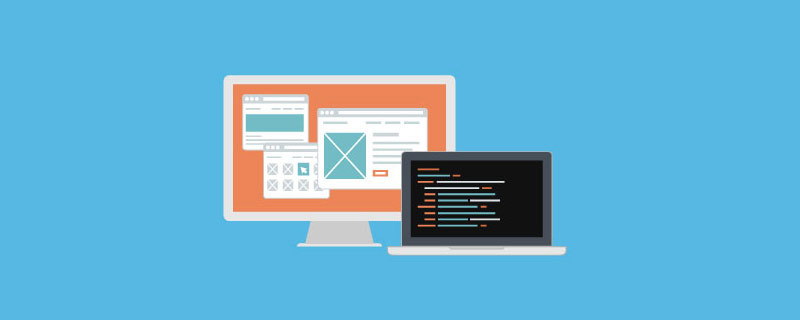What are the responsive css front-end frameworks?
Responsive css front-end frameworks include: 1. Semantic UI Framework; 2. Less Framework; 3. Foundation Framework; 4. UIkit Framework; 5. YUI Framework.

Commonly used responsive css front-end framework (part):
(Learning video recommendation: css video tutorial)
1. Semantic UI Framework
Semantic gives developers and designers a wider range of control by creating a language to easily share UI. No more hieroglyphs: Semantic uses natural language to organize using conventions to make the development process more innovative. Facilitates communication with components: gives you a series of UI components with real-time debug output, allowing your code to tell you what it does.
2. Twitter Bootstrap Framework
Smooth, creative and powerful mobile-first front-end framework to help you quickly develop web applications
3. Foundation Framework
foundation 3 is compiled using the powerful CSS precompiler SASS, allowing you to develop quickly, and provides new tools to quickly customize
4, UIkit Framework
UIkit provides A set of HTML, CSS, JS components. It can be extended as a theme and is very easy to customize into a personalized UI
5. Skeleton CSS Boilerplate
Skeleton is a set of ultra-small CSS files that help you quickly develop websites of any size. , whether it is a 17-inch laptop screen or an iPhone.
6. 99lime HTML KickStart
Super exquisite HTML5, CSS and JS components to help you quickly develop your website
7. Kube — Professional CSS-framework
Minimalist but very rich components to develop adaptive or responsive websites. It has a flexible Grid and beautiful font layout. Absolute freedom, no unnecessary forced style.
8. Less Framework 4
Less framework is a CSS grid system that helps you design adaptive websites. Contains 4 layouts and 3 sets of typography presets, all based on the same Grid.
9. Yet Another Multicolumn Layout ‘YAML’
YAML is a modular CSS framework that focuses on flexibility, good access and responsive design. This framework focuses on device-independent screen design and flexible layout modular management.
10. YUI Framework
YUI is a free, open source JS and CSS class library, mainly used by users to create rich client interactive web applications
Related recommendations: CSS tutorial
The above is the detailed content of What are the responsive css front-end frameworks?. For more information, please follow other related articles on the PHP Chinese website!

Hot AI Tools

Undresser.AI Undress
AI-powered app for creating realistic nude photos

AI Clothes Remover
Online AI tool for removing clothes from photos.

Undress AI Tool
Undress images for free

Clothoff.io
AI clothes remover

Video Face Swap
Swap faces in any video effortlessly with our completely free AI face swap tool!

Hot Article

Hot Tools

Notepad++7.3.1
Easy-to-use and free code editor

SublimeText3 Chinese version
Chinese version, very easy to use

Zend Studio 13.0.1
Powerful PHP integrated development environment

Dreamweaver CS6
Visual web development tools

SublimeText3 Mac version
God-level code editing software (SublimeText3)

Hot Topics
 How to use bootstrap in vue
Apr 07, 2025 pm 11:33 PM
How to use bootstrap in vue
Apr 07, 2025 pm 11:33 PM
Using Bootstrap in Vue.js is divided into five steps: Install Bootstrap. Import Bootstrap in main.js. Use the Bootstrap component directly in the template. Optional: Custom style. Optional: Use plug-ins.
 The Roles of HTML, CSS, and JavaScript: Core Responsibilities
Apr 08, 2025 pm 07:05 PM
The Roles of HTML, CSS, and JavaScript: Core Responsibilities
Apr 08, 2025 pm 07:05 PM
HTML defines the web structure, CSS is responsible for style and layout, and JavaScript gives dynamic interaction. The three perform their duties in web development and jointly build a colorful website.
 Understanding HTML, CSS, and JavaScript: A Beginner's Guide
Apr 12, 2025 am 12:02 AM
Understanding HTML, CSS, and JavaScript: A Beginner's Guide
Apr 12, 2025 am 12:02 AM
WebdevelopmentreliesonHTML,CSS,andJavaScript:1)HTMLstructurescontent,2)CSSstylesit,and3)JavaScriptaddsinteractivity,formingthebasisofmodernwebexperiences.
 How to write split lines on bootstrap
Apr 07, 2025 pm 03:12 PM
How to write split lines on bootstrap
Apr 07, 2025 pm 03:12 PM
There are two ways to create a Bootstrap split line: using the tag, which creates a horizontal split line. Use the CSS border property to create custom style split lines.
 How to set up the framework for bootstrap
Apr 07, 2025 pm 03:27 PM
How to set up the framework for bootstrap
Apr 07, 2025 pm 03:27 PM
To set up the Bootstrap framework, you need to follow these steps: 1. Reference the Bootstrap file via CDN; 2. Download and host the file on your own server; 3. Include the Bootstrap file in HTML; 4. Compile Sass/Less as needed; 5. Import a custom file (optional). Once setup is complete, you can use Bootstrap's grid systems, components, and styles to create responsive websites and applications.
 How to insert pictures on bootstrap
Apr 07, 2025 pm 03:30 PM
How to insert pictures on bootstrap
Apr 07, 2025 pm 03:30 PM
There are several ways to insert images in Bootstrap: insert images directly, using the HTML img tag. With the Bootstrap image component, you can provide responsive images and more styles. Set the image size, use the img-fluid class to make the image adaptable. Set the border, using the img-bordered class. Set the rounded corners and use the img-rounded class. Set the shadow, use the shadow class. Resize and position the image, using CSS style. Using the background image, use the background-image CSS property.
 How to use bootstrap button
Apr 07, 2025 pm 03:09 PM
How to use bootstrap button
Apr 07, 2025 pm 03:09 PM
How to use the Bootstrap button? Introduce Bootstrap CSS to create button elements and add Bootstrap button class to add button text
 How to resize bootstrap
Apr 07, 2025 pm 03:18 PM
How to resize bootstrap
Apr 07, 2025 pm 03:18 PM
To adjust the size of elements in Bootstrap, you can use the dimension class, which includes: adjusting width: .col-, .w-, .mw-adjust height: .h-, .min-h-, .max-h-






